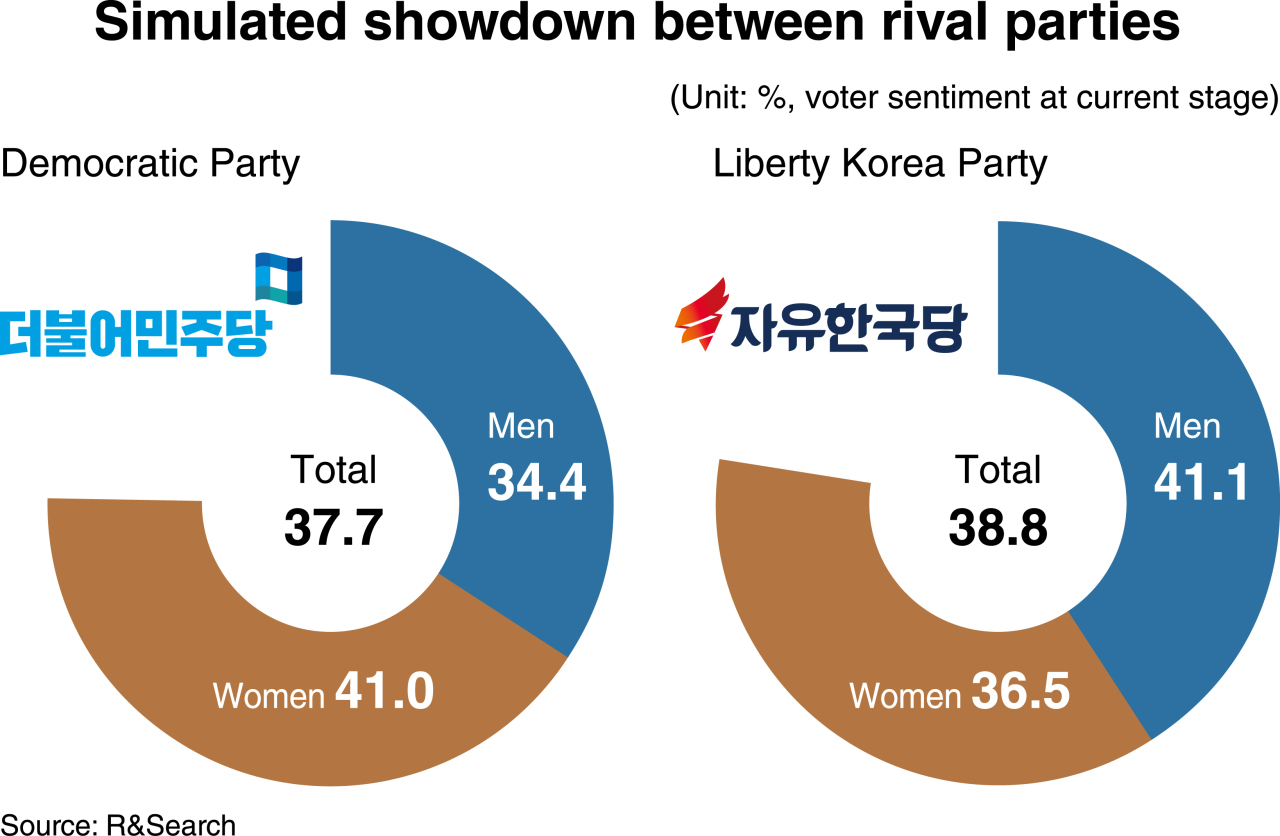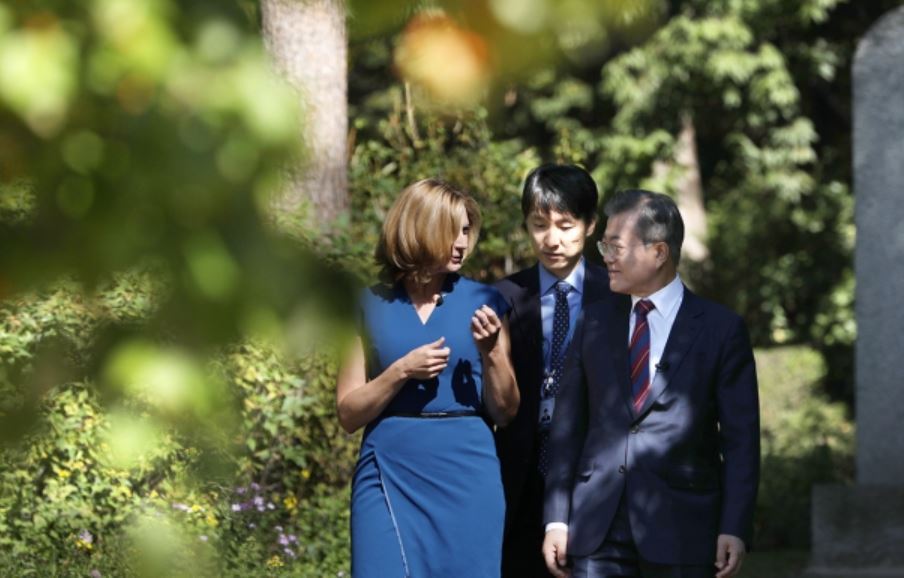[News Focus] Moon, ruling party lose support from wider brackets, regions: polls
By Kim Yon-sePublished : May 30, 2019 - 16:24
SEJONG -- Poll results released Tuesday show that the main opposition Liberty Korea Party may have overtaken the ruling Democratic Party of Korea in terms of approval ratings, though the gap is negligible.
Pollster R&Search surveyed 1,000 people nationwide in coordination with media outlet Asia Today, asking questions such as, “Which party would you vote for if the general election were held tomorrow?”
Pollster R&Search surveyed 1,000 people nationwide in coordination with media outlet Asia Today, asking questions such as, “Which party would you vote for if the general election were held tomorrow?”

While 37.7 percent of the respondents picked the Democratic Party, 38.8 percent said they favored the Liberty Korea Party. In third and fourth place were the Justice Party with 6.7 percent and the Bareunmirae Party with 5.9 percent.
The respondents’ answers reflected a gender divide, with the ruling party winning support from 41.0 percent of the female respondents but only 34.4 percent of the male respondents. Conversely, the main opposition was favored by 41.1 percent of the men but only 36.5 percent of the women.
It is also noteworthy that the Liberty Korea Party was more popular than the Democratic Party in regions outside the Seoul metropolitan area and the Jeolla provinces.
Despite strong showings in the 2018 local elections and the 2017 presidential election, the ruling party lost ground to the rival party in the Sejong, Daejeon and Chungcheong area with just 32.8 percent support versus 46.1 percent for the main opposition.
If an election were held now, its seems that the Democratic Party would also face defeat in the provinces of Gangwon and Jeju with only 37.6 percent support versus 49.7 percent for the main opposition.
The gap between the two parties’ approval ratings is especially wide in the Busan, Ulsan and South Gyeongsang Province area -- 31.8 percent versus 50.5 percent -- as well as the Daegu and North Gyeongsang Province area, where it is 26.6 percent versus 48.6 percent.
The ruling party and its main rival are battling for support from respondents in their 20s, with 38.8 percent in this group saying they would vote for the Democratic Party and 32.6 percent favoring the Liberty Korea Party.
Meanwhile, a Gallup Korea poll, the results of which came out May 25, showed that the ruling party was still ahead of its main rival in terms of approval ratings, with a wide gap of 36 percent versus 24 percent.
But the poll suggested that the Democratic Party was losing popularity among voters in the Busan-Ulsan-South Gyeongsang area, where the approval ratings stood at 25 percent for the ruling party versus 39 percent for the main opposition.
In addition, the party affiliated with President Moon Jae-in lost ground to its rival among self-employed citizens and full-time homemakers nationwide. Their respective approval ratings among these groups stood at 28 percent versus 38 percent and 29 percent versus 38 percent.
Jobless respondents and retirees also preferred the Liberty Korea Party with 30 percent support, versus 26 percent for the ruling party.
“A large proportion of housewives in their 50s and older are believed to have withdrawn their support for President Moon and the Democratic Party,” said a research analyst in Yeouido, Seoul.
He said the lower approval ratings among senior full-time homemakers could be attributed to the rising unemployment rate among young people and to troubled financial conditions facing households as a result of widespread small-business closures, suggesting that they were basing their decisions on the experiences of their husbands and grown children.
But he also said housewives in their 30s and early 40s still supported the ruling party, citing Moon’s popularity within online “mom cafes.”
The Gallup Korea statistics showed that the Democratic Party’s approval rating dropped 8 percentage points in six months, to 36 percent from 44 percent in the fourth week of November. In contrast, the Liberty Korea saw its approval rating climb 10 percentage points, from 14 percent to 24 percent.
Concerning Moon’s administrative performance, 46 percent of the Gallup respondents said they supported the president while 44 percent said they did not.

When asked why, 50 percent of those who said they did not support the president said he lacked capability in economic matters that affected the people’s living conditions. The second most common answer, at 13 percent, was his North Korea policies.
Moon’s approval ratings were also low among housewives (38 percent), self-employed people (31 percent), and jobless people and retirees (36 percent).
Among those supporting him, 15 percent cited improvements in inter-Korean relations and 12 percent said Moon was doing his best on administrative affairs.
While the next general election is 11 months away (April 15, 2020), the next president will be elected in 34 months (March 9, 2022).
By Kim Yon-se (kys@heraldcorp.com)








![[Kim Seong-kon] Democracy and the future of South Korea](http://res.heraldm.com/phpwas/restmb_idxmake.php?idx=644&simg=/content/image/2024/04/16/20240416050802_0.jpg&u=)







![[KH Explains] Hyundai's full hybrid edge to pay off amid slow transition to pure EVs](http://res.heraldm.com/phpwas/restmb_idxmake.php?idx=652&simg=/content/image/2024/04/18/20240418050645_0.jpg&u=20240418181020)

![[Today’s K-pop] Zico drops snippet of collaboration with Jennie](http://res.heraldm.com/phpwas/restmb_idxmake.php?idx=642&simg=/content/image/2024/04/18/20240418050702_0.jpg&u=)